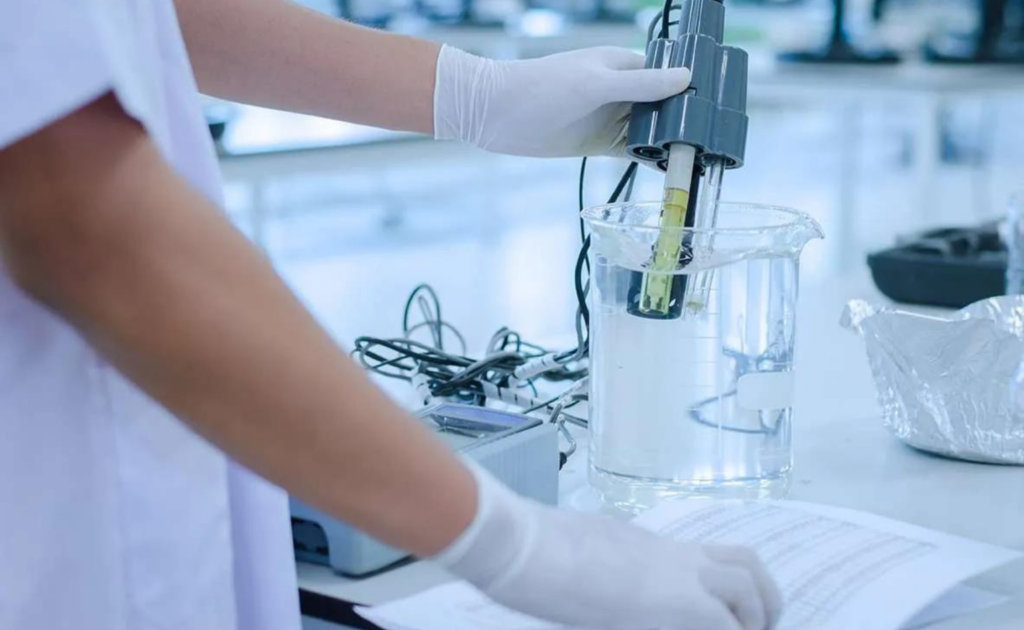Posts

Why Water Quality Testing is Imperative
Water quality testing is an important step to ensure the water’s safety. It offers a critical evaluation of the water’s purity and safety for consumption.
Acknowledging why water quality testing is important isn’t only a matter of health and well-being. It is also a proactive step that maintains a sustainable environment.
This blog will discuss the top reasons that make water quality testing imperative. We will also cater to its impact on public health and environmental conservation.
Health Protection
Water quality is essential to guaranteeing the security of our water supply and defending the general public’s health.
It helps identify and get rid of dangerous pollutants that might be found in water sources. This process protects individuals from the possible health dangers of drinking contaminated water.
Numerous pollutants threaten the public’s health. These include chemicals, heavy metals, viruses, and bacteria. Water quality testing makes it simpler to find these pollutants, even in trace amounts.
Bacterial contaminants, such as E. coli, can indicate the presence of fecal matter. This signifies potential waterborne diseases.
Identifying heavy metals like lead, mercury, and arsenic is crucial. These substances, even in trace amounts, can have severe health implications.
Regular water quality testing acts as a preventive measure. It allows authorities to address contamination issues promptly. The results of these tests help implement necessary measures to purify water sources and prevent the spread of waterborne diseases.
Safe Drinking Water
Water quality testing helps in significantly minimizing the risk of waterborne diseases. This also helps in ensuring that the water is drinkable.
Drinkable water should meet different standards set by regulatory bodies. These standards are considered to be safe for human consumption. Water quality testing is pivotal in assessing whether these standards are met. This way, you get valuable insights into the overall safety of the water supply.
This verification process involves testing for various contaminants, including bacteria, viruses, parasites, and chemical substances.
Bacterial contaminants indicate fecal contamination and can lead to gastrointestinal illnesses if present in drinking water. Water quality testing detects and quantifies these bacteria. This helps guarantee that the water is free from harmful microorganisms.
Water quality testing serves as a preventative measure against waterborne diseases by verifying the potability of water. It enables timely interventions and corrective actions, ensuring communities access to clean and safe drinking water.
The information obtained from these tests helps make informed decisions to protect public health and well-being.
Compliance with Regulations
Regulatory bodies establish specific standards to safeguard public health. These standards define the acceptable levels of various contaminants and parameters in drinking water. They also protect consumers from potential health risks associated with waterborne contaminants.
Water quality testing through systematic testing measures the concentration of different substances in water, including bacteria, chemicals, and physical properties. These assessments are aligned with established standards, allowing authorities to evaluate if the water supply meets the necessary criteria for safety and quality.
Adherence to water quality guidelines is crucial to avoiding drinking water that could harm one’s health. For instance, high concentrations of harmful chemicals or bacteria in drinking water can result in various negative health effects. These include waterborne diseases.
Regular water quality testing guarantees that water treatment plants and distribution networks manage and maintain the water quality within the specified parameters.
Furthermore, adherence to water quality standards contributes to environmental conservation and sustainability. By monitoring and controlling contaminants, authorities can mitigate the impact of water pollution on ecosystems, aquatic life, and natural resources.
Environmental Conservation
Water quality testing safeguards ecosystems and aquatic life from the detrimental effects of pollution.
Through rigorous testing, water quality assessments evaluate the presence of contaminants, pollutants, and changes in physical and chemical properties. This monitoring process helps in identifying potential threats to aquatic environments. It also plays a role in preventing and mitigating the impact of pollution.
Pollutants can range in various forms, such as:
- Industrial discharge
- Agricultural runoff
- Untreated sewage
These contaminants can adversely affect water quality, leading to oxygen depletion, habitat degradation, and declining aquatic biodiversity. Water quality testing detects and quantifies these pollutants. This enables the authorities to take corrective actions to protect ecosystems.
By continuously monitoring water quality, authorities can establish baseline data, detect trends, and implement measures to address pollution sources. This proactive approach helps in preserving the delicate balance of aquatic ecosystems. Further, this ensures the sustainability of natural habitats.
Water quality testing also provides valuable information for developing and enforcing environmental regulations. By understanding the quality of water in different ecosystems, authorities can establish standards that limit the release of pollutants. This way, they can promote responsible environmental practices and sustainable water management.
How to Test the Water Quality
Testing water quality involves assessing various parameters to determine its safety and suitability for consumption, recreational activities, and sustaining aquatic life. Here’s a step-by-step breakdown of how to test water quality:
Identify Testing Parameters
Begin by identifying the specific parameters you want to test for. Common parameters include the following:
- pH levels
- Dissolved oxygen
- Turbidity
- Total dissolved solids (TDS)
- Bacteria (such as coliforms)
- Heavy metals
- Specific contaminants like nitrates and phosphates
Get the Testing Kits
Get water testing kits suitable for the parameters you intend to test. These kits are readily available and may include test strips, reagents, and equipment needed for the analysis.
Follow Instructions Carefully
Read and follow the instructions provided with the testing kit. Different kits may have specific procedures. Know that accurate results depend on following these instructions meticulously.
Collect Water Samples
Collect water samples from the source you want to test. Use clean containers, and avoid contamination by not touching the inside of the container. Also, don’t use containers that have been washed with detergents.
Test for Physical Parameters
Use appropriate test strips or meters for physical parameters like pH, turbidity, and TDS. Dip the strip or sensor into the water sample. After that, compare the resulting color or reading with the provided chart.
Send Samples to a Laboratory
Consider sending water samples to a certified laboratory for a more comprehensive analysis. Labs can conduct in-depth testing for various pollutants, providing detailed reports.
Interpret Results
Understand the significance of the results. Compare them to water quality standards and guidelines established by environmental agencies or health organizations. This helps determine whether the water is within acceptable limits or if corrective measures are needed.
Seek Professional Assistance
If in doubt or if the testing indicates severe contamination, seek professional assistance. Environmental consultants or public health authorities can guide you in addressing complex water quality issues in this case.
Greenworks Inspection: Your Gateway to a Healthier Living Environment
Water quality testing is important to safeguard public health, environmental preservation, and well-being. Water quality testing is important because it helps ensure the water is free from harmful contaminants.
Eventually, this proactive approach fosters a sustainable and safe water supply. Furthermore, it contributes to healthier lives and a resilient environment.
Explore the insights you need for a healthier living environment with Greenworks Inspection. Contact us to discover valuable information about your property and ensure peace of mind.




